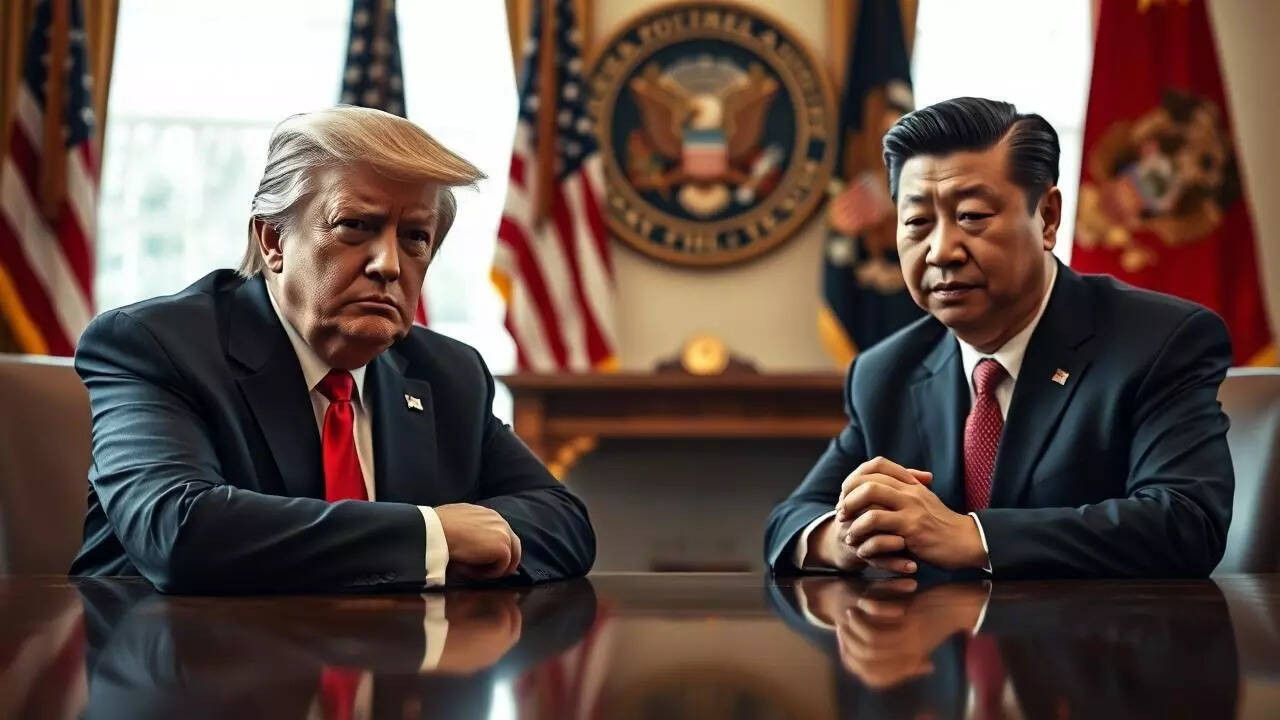The US and China have finalized a trade deal, with the US agreeing to cancel restrictive measures, according to China. This follows earlier discussions and a negotiation framework established in London. China is expediting rare earth export approvals, a crucial element in high-tech manufacturing, while both economies have faced negative impacts from trade tensions, including declining manufacturing profits and economic slowdown.
A Thaw in Trade Winds? US and China Signal Potential Easing of Tensions
For years, the economic titans of the US and China have been locked in a high-stakes dance of tariffs and restrictions, a trade war that has sent ripples across global markets. But could the icy relationship be starting to melt? Recent pronouncements from Beijing suggest a possible path toward de-escalation, hinting at a US commitment to roll back certain trade barriers. This could signal the start of a new chapter after a particularly turbulent period under the Trump administration.
While details remain somewhat veiled in diplomatic language, the key takeaway is that dialogue, however fragile, is ongoing. China’s Ministry of Commerce has stated that both sides have “confirmed” details of a potential agreement. This isn’t a final, signed treaty just yet, but it does represent a significant step forward from the acrimony that has characterized the past few years.

The specifics of which “restrictive measures” the US might be prepared to cancel haven’t been publicly disclosed. We’re likely talking about a phased approach to unwinding at least some of the tariffs imposed during the height of the trade war. These tariffs, impacting everything from steel and aluminum to consumer goods, have increased costs for businesses and consumers alike on both sides of the Pacific.
Understanding the Stakes of a Potential US China Trade Deal
The impact of the US China trade deal reaches far beyond the balance sheets of multinational corporations. It affects the livelihoods of farmers, the prices consumers pay at the grocery store, and the investment decisions of businesses large and small. The back-and-forth of tariffs has created uncertainty and volatility, making it difficult for companies to plan for the future.
A genuine easing of tensions could unleash a wave of economic activity. Reduced tariffs would lower import costs, potentially leading to lower prices for consumers. Businesses would gain more confidence to invest and expand, and global supply chains, which have been disrupted by the trade war, could begin to normalize. Furthermore, cooperation between the two economic giants can improve the international relationships.
What’s Driving This Shift in Tone?
Several factors could be contributing to this potential thaw. Both countries are facing economic headwinds. China is grappling with domestic challenges, including a slowing real estate market and demographic shifts. The US is navigating persistent inflation and the risk of a recession. Perhaps the pressure to stabilize their economies is encouraging a more pragmatic approach to trade relations.
Furthermore, the global landscape is shifting. The war in Ukraine, geopolitical tensions in other regions, and the urgent need to address climate change all require international cooperation. A stable and predictable trade relationship between the US and China would undoubtedly make it easier to tackle these shared challenges.
Cautious Optimism: Navigating the Road Ahead
While the signals are encouraging, it’s important to temper enthusiasm with realism. Previous attempts to reach a comprehensive trade agreement have faltered, and deep-seated disagreements remain between the two countries. Issues like intellectual property protection, human rights, and China’s industrial policies are still sources of friction.
The path forward is likely to be gradual and incremental. We can expect continued negotiations, with both sides carefully calibrating their moves. However, the mere fact that dialogue is continuing and that there’s talk of easing restrictions suggests a willingness to find common ground. If you are interested in learning more about US trade relations, explore this article about the US trade deficit.
The potential easing of trade tensions between the US and China offers a glimmer of hope for a more stable and prosperous global economy. While the road ahead is uncertain, the possibility of a US China trade deal that benefits both nations is a welcome development. The world will be watching closely to see if this thaw in trade winds will truly blossom into a lasting spring.







